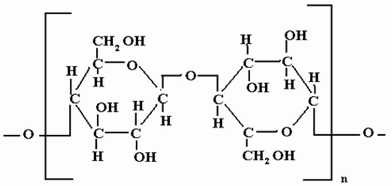What’s the solution to traditional screen printing?
Eco-friendly REHANCE by TS Designs
Did you know there are two main formats of screen printing ink – plastisol and water-based?
A typical screen printer will take a dyed shirt (which is to say, a shirt that is already a color) and print it with plastisol inks, which are no good no matter how you look at them.
They create a surface coating that feels like plastic on the shirt and leave the fabric covered with an uncomfortable, rubbery print that’ll eventually crack and peel off the shirt.
At TS Designs, we’ve developed a more environmentally-friendly, higher quality alternative we call the REHANCE process. We leave out the nasty stuff, so there’s no PVC; no phthalates; no cracking, fading, or peeling; no petroleum products; no rubbery, sticky print across your chest. Just a completely breathable, permanent, colorful print. You could even iron the shirt if you were so inclined (though why anyone would iron a t-shirt is beyond us!).
We get a lot of questions about REHANCE, so we wanted to share a little more about why it’s so much better for the planet — and for all of us living on it.
Traditional Printing
First, let’s talk about traditional printing with plastisol inks. These inks also almost always contain PVC and phthalates — the former emits dioxins (a very potent environmental toxin/pollutant) during manufacture and disposal, and the latter contribute to quite a few negative health effects.
Water-based inks, on the other hand, soak into and become part of a shirt. They’re more permanent; will never crack, peel, or fade; and leave the fabric completely breathable.They also contain no PVC or phthalates.
So why is most printing performed with plastisol over water-based inks? Because in order to print a light color on a dark shirt, screen printers have to use a surface coating.
You can think about it like this. Consider watercolor paint vs. latex paint. If you have a black piece of paper and try to put light blue watercolor paint on it, the result is less than impressive. The translucent paint just soaks into the paper instead of staying on top of it, so anyone looking at it likely wouldn’t notice any color.
If you take that same piece of paper and apply latex paint to it, the latex color is opaque and will sit on the surface of the paper, making the color bright and vibrant. Anyone looking at it would notice the brightness and feel the surface coating. They could even chip it away with their fingernail if they tried. This is essentially the same difference between water-based and plastisol inks.
Water-based inks feel better and are more environmentally-friendly, but they don’t work well on color shirts. On the other hand, plastisol is less comfortable and harsher to the environment, but it’s much easier to work with and more versatile.
So what do screen printers who care about the environment do when needing to print on color shirts?
An Alternative to Traditional Printing — REHANCE
They print with REHANCE.
The REHANCE process uses a specially-formulated water-based ink that resists dye. This means we print on white shirts and then add color to them (rather than printing on a shirt that’s already a color).
Here’s what the process looks like. We print on white shirts with the REHANCE chemistry, and then garment dye the shirts whatever color we choose. The printed ink seals the area it’s printed on, preventing any color from dyeing or staining that area.

The result? A white print is visible on the shirt. However, unlike with traditional printing, this white print is not a surface coating – it’s simply the lack of black dye.
Another way to think of it is to think about using painters tape before painting a wall. Tape over the area you don’t want to paint, then peel the tape off afterward and voila! No color. REHANCE essentially works the same way, except there’s nothing to peel off afterward.
Advantages of REHANCE
What are the advantages of REHANCE? Well, we’ve already mentioned that it leaves out the yucky stuff like PVC and phthalates and leaves you with a completely breathable, permanent, and colorful print.
It’s also worth noting that REHANCE printing leaves less on the shirt in general. While plastisol adds ink on top of a shirt, REHANCE works by keeping dye off the printed area of a shirt.
For those familiar with textile printing, it’s important to know that REHANCE isn’t discharge. Discharge uses harsh chemicals and works by blasting dye out of an already-dyed shirt using zinc formaldehyde sulfoxylate.
REHANCE simply prevents dye from bonding to the shirt in the first place.
To learn more about our US-made t-shirts that are screen printed with the environmentally friendly REHANCE process, visit our products page.
